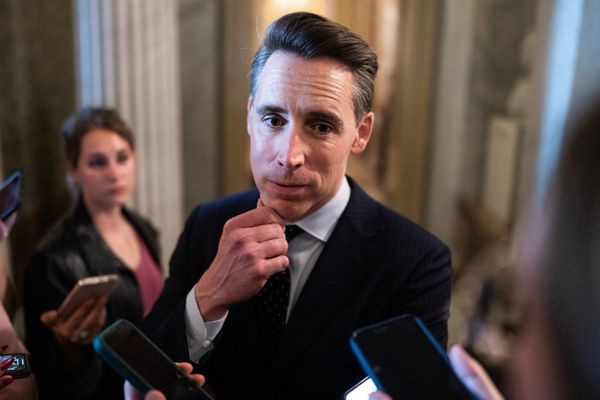Donald Trump took time out from watching the eagerly-awaited Super Bowl clash between the Philadelphia Eagles and the Kansas City Chiefs in New Orleans on Sunday to issue a surprise call for the abolition of the penny.
“For far too long the United States has minted pennies which literally cost us more than 2 cents. This is so wasteful!” the president posted on Truth Social mid-game.
“I have instructed my Secretary of the U.S. Treasury to stop producing new pennies. Let’s rip the waste out of our great nations [sic] budget, even if it’s a penny at a time.”
While many Americans may instinctively baulk at the idea of doing away with the country’s smallest unit of currency – which bears a portrait of Abraham Lincoln on its obverse side and a union shield and the Latin phrase “E Pluribus Unum” (meaning “out of many, one”) on the tails side – the U.S. Mint did indeed report in 2024 that each one cent coin costs 3.69 cents to make from copper and zinc.
The penny’s manufacturing price therefore stands at three and a half times its actual worth as currency, a concept known as “negative seigniorage” that leaves the government running at a loss.
What’s more, last year marked the 19th consecutive fiscal year that the penny’s production cost had outpaced its face value, according to the Mint, and came at a time when circulating revenue was down 42.1 percent to $553.3 million, with a 23.4 percent or $9.7 million decrease in penny revenue contributing to that total.
An investigation by The New York Times last year argued in favor of abolishing the coin and persuasively made the case that “few things symbolize our national dysfunction more than the inability to stop minting this worthless currency”.
The newspaper explained that the fact that most pennies handed out as change in over-the-counter transactions end up in glass jars, piggy banks and pockets, unspent, forgotten and too low-value to be anything more than a nuisance to the holder.
That means they inadvertently create “an incessant demand for new pennies to replace them so that cash transactions that necessitate pennies… can be settled”.
The NYT continued: “Because these replacement pennies will themselves not be spent, they will need to be replaced with new pennies that will also not be spent, and so will have to be replaced with new pennies that will not be spent, which will have to be replaced by new pennies (that will not be spent, and so will have to be replaced).
“In other words, we keep minting pennies because no one uses the pennies we mint.”
As a result of this nonsensical but tireless demand, an estimated 240 billion pennies are thought to be out there in the wild in the United States, enough to give 724 (or $7.24) to each citizen and, according to a 2019 study, were even a fraction of those to be suddenly reintroduced to recirculation en masse, the result would be “logistically unmanageable.”
American economists have been alive to the absurdity of the situation for decades, with Treasury Secretary William E Simon calling on Congress to consider the abolition of the penny in 1976, only for his appeal to be ultimately left unanswered.

U.S. Mint director Edmund Moy also implored lawmakers during his tenure between 2006 and 2011 to pass legislation ordering the end of the penny, which was likewise ignored, while President Barack Obama noted in 2013 that the coin’s persistence was “a good metaphor for some of the larger problems” of the U.S. government.
While it is generally assumed that the Federal Reserve holds responsibility for determining the country’s monetary needs, Section 5111 of Title 31 of the U.S. Code – as the NYT investigation discovered – leaves the matter of minting and issuing coins in the hands of the Treasury Secretary, a position currently occupied by recent Trump appointee Scott Bessent, suggesting an instant stop to the coin’s production could be ordered without involving Congress.
Countries like New Zealand, Australia and Canada have already abolished their own pennies, doing so in 1989, 1992 and 2013 respectively, with few issues reported.
But some lobbyists remain opposed to such a move on sentimental grounds, arguing for the preservation of the penny in honor of its historic longevity (it was first minted in 1793) or because charities and impoverished citizens rely on small change in their daily interactions.
But with philanthropic donations increasingly made online and with 100 highly cumbersome individual pennies needed to make up even as small an amount of money as $1, those arguments surely no longer hold water.







